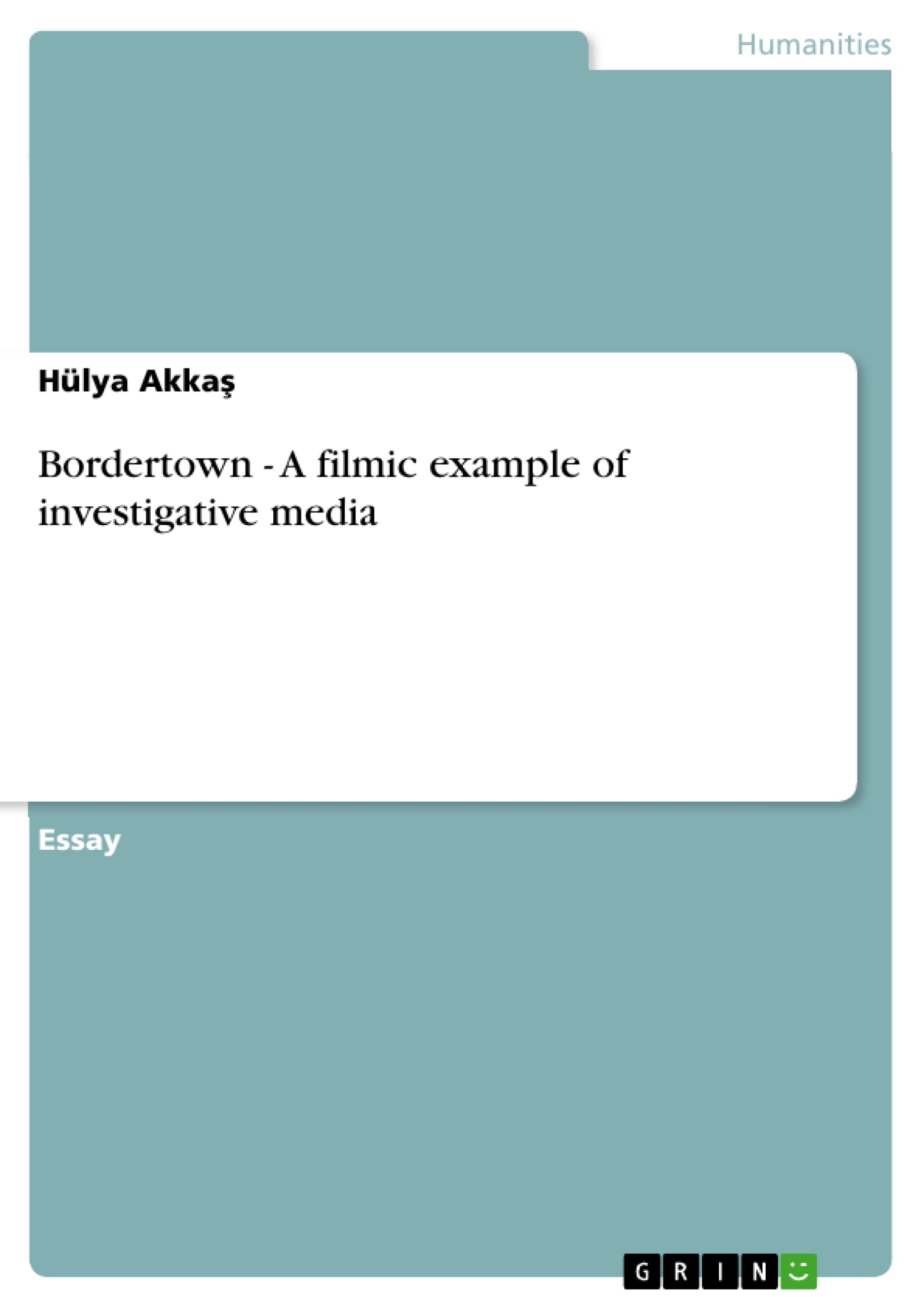Since the 1990s, in Juárez, Mexico, there have taken place scores of murders of young Mexican women. They are chased by their murderers on their ways home from the so called ‘maquiladoras’, which are factories where they work for a little sum of money and produce TVs or computers for the USA at the assembly lines. The young women are violated and raped by their kidnappers and later their dead bodies are buried somewhere in the desert of Mexico. Nevertheless, the police and the whole government of Juárez try to camouflage these events. The number of victims, published by the police, is about 375 women, whereas the estimated number of unreported cases is about 5000.
Gregory Nava made these true events to the story of his movie Bordertown from 2006. The tortures the women of Juárez have to experience and the underlying topic of border-crossing are the essential subjects of Bordertwon. Furthermore, within his movie, he has chosen a special way of communicating these topics to the viewer: he makes use of media, respectively investigative media, in order to show how hard it is to explore this subject. So, not only he himself uses media as an organ of communication but he moreover embeds the investigation of certain matters into his movie.
Nowadays media is the most important institution of distributing and communicating information and of transmitting one’s own perspective about certain topics. This is not only done by directors like in the case of Gregory Nava but by everyone who stands in the centre of a certain field – for instance politicians or celebrities. As Wilma de Jong, Martin Shaw and Neil Stammers have formulated in their introduction of Global Activism, Global Media (2005):
“Media appear to be increasingly globalised, as national television, press, etc. are subsumed in gigantic worldwide flows of information and ideas, symbolized by the internet which offers social and political actors new opportunities for more direct communication.”
So, media – in our time better said ‘mass media’ – stands for a direct but widely spread transmission of information to the audience. People, who decide to transmit certain messages through media – in this case for instance Gregory Nava and his protagonists from Bordertown – have a special aim by acting this way: they want to make a change within the field they are working for. Whether Nava did this successfully or not will be discussed later on in this paper. [...]
Inhaltsverzeichnis (Table of Contents)
- Introduction
- Vignette on Bordertown
- Gist
- Excerpts and quotes from the movie
- Relevance for our seminar
- Study questions
- Personal assessment
- Bibliography tips and links
- Review
- Bibliography
Zielsetzung und Themenschwerpunkte (Objectives and Key Themes)
This paper aims to analyze the film "Bordertown" (2006) as an example of investigative media, focusing on its portrayal of the murders of young Mexican women in Ciudad Juárez. It examines how the film uses media, specifically investigative journalism, to shed light on the complexities of this issue and the challenges faced by those seeking justice. The paper also explores the broader theme of border-crossing, both literal and metaphorical, as it relates to the narrative and the characters' experiences.
- Investigative media and its role in exposing truth
- The murders of young women in Ciudad Juárez
- The challenges of cross-border journalism
- The themes of justice, corruption, and human rights
- Border-crossing as a metaphor for personal and societal transformation
Zusammenfassung der Kapitel (Chapter Summaries)
The paper begins with an introduction that provides context to the murders in Ciudad Juárez and Gregory Nava's decision to use the true events as the basis for his film "Bordertown." It discusses the role of media in transmitting information and shaping perspectives, particularly in the context of global activism.
The first chapter is a vignette on the film "Bordertown," outlining its key plot points and themes. It introduces the protagonist, Lauren Adrien, an American journalist who is tasked with investigating the murders. The vignette also discusses how Lauren's involvement with the case, particularly her decision to immerse herself in the lives of the women who work in the maquiladoras, exemplifies the power of investigative journalism in exposing the truth.
Schlüsselwörter (Keywords)
The key terms and concepts explored in this paper include investigative media, Ciudad Juárez, border-crossing, maquiladoras, gender-based violence, human rights, corruption, justice, and media activism.
- Quote paper
- B.A. Hülya Akkaş (Author), 2008, Bordertown - A filmic example of investigative media, Munich, GRIN Verlag, https://www.grin.com/document/145456



